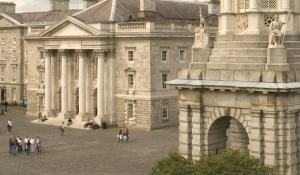Posted Jul 18, 2015 07:01
I have to disagree with you, I think comparing Hult to European University is not a fair comparison either. I think during its 8 years of existence, the school has invested much more in corporation relations, faculty, and research than any of those schools. If it wasn't for the marketing the school wouldn't have never had the capital to invest in any of the aforementioned. So yes logically their initial strategy was to feed on "kids who are better connected than average" but I am sure that is being phased out. No doubt that as the school matures it will have a more traditional MBA.
lets not forget that My comment about the Ranking was a response to yours. "It's 21 in the international ranking, below the Molson School. That reflects the reality of the school". If being below Molson School "reflects the reality", then so should being above Imperial/Manchester. My comment was more directed the ranking's inability to properly assess business schools.Therefore I saw your use of the ranking for comparison as useless.
Forging corporate relationships takes time, and the more alumni are recruited by big corporations, the more these will enticed to recruit directly from Hult.
So let's look at the actual numbers. Hult Vs. Insead
Looking at the percentages(#of employees/ Network Size), For Hult based on the linkedin numbers of the top 25 employeers (excluding EF) employ 4.35% of the total network
The list includes
Deloitte, IBM, EY, Accenture, Google, PWC, Bloomberg LP, HP, Cognizant, Oracle, Microsoft, Uniliver, J&J, l'OREAL, state Street, American Express, Amazon, Citi, DU, Cisco, Mindbody, Wells Fargo, Barclays, Phillips
For insead the top 25 employeers employ 8.9%
With a list that includes Mc Kinsey, Boston Consulting, IBM, bain, Google, syngenta, SHell, Accenture, HP, Sap, Valeo, Amazon, L'Oreal, pwc, eY, credit Suisse, AMro, Standard Chartered bank, Deutsche Bank, PWC, Deloitte, Novartis, Heineken, Alcatel
The reality is in the numbers, 4.35 is almost half of Insead's. What does that say? For a school with 8 years of existence, wouldn't that be competitive compared to a school that was established in 1957?
I suppose nobody has a chrystal ball to really know what the school's real intentions are. However, it really seems like a start up trying to establish itself.
I have to disagree with you, I think comparing Hult to European University is not a fair comparison either. I think during its 8 years of existence, the school has invested much more in corporation relations, faculty, and research than any of those schools. If it wasn't for the marketing the school wouldn't have never had the capital to invest in any of the aforementioned. So yes logically their initial strategy was to feed on "kids who are better connected than average" but I am sure that is being phased out. No doubt that as the school matures it will have a more traditional MBA.
lets not forget that My comment about the Ranking was a response to yours. "It's 21 in the international ranking, below the Molson School. That reflects the reality of the school". If being below Molson School "reflects the reality", then so should being above Imperial/Manchester. My comment was more directed the ranking's inability to properly assess business schools.Therefore I saw your use of the ranking for comparison as useless.
Forging corporate relationships takes time, and the more alumni are recruited by big corporations, the more these will enticed to recruit directly from Hult.
So let's look at the actual numbers. Hult Vs. Insead
Looking at the percentages(#of employees/ Network Size), For Hult based on the linkedin numbers of the top 25 employeers (excluding EF) employ 4.35% of the total network
The list includes
Deloitte, IBM, EY, Accenture, Google, PWC, Bloomberg LP, HP, Cognizant, Oracle, Microsoft, Uniliver, J&J, l'OREAL, state Street, American Express, Amazon, Citi, DU, Cisco, Mindbody, Wells Fargo, Barclays, Phillips
For insead the top 25 employeers employ 8.9%
With a list that includes Mc Kinsey, Boston Consulting, IBM, bain, Google, syngenta, SHell, Accenture, HP, Sap, Valeo, Amazon, L'Oreal, pwc, eY, credit Suisse, AMro, Standard Chartered bank, Deutsche Bank, PWC, Deloitte, Novartis, Heineken, Alcatel
The reality is in the numbers, 4.35 is almost half of Insead's. What does that say? For a school with 8 years of existence, wouldn't that be competitive compared to a school that was established in 1957?
I suppose nobody has a chrystal ball to really know what the school's real intentions are. However, it really seems like a start up trying to establish itself.


-bbbf1.jpeg)

